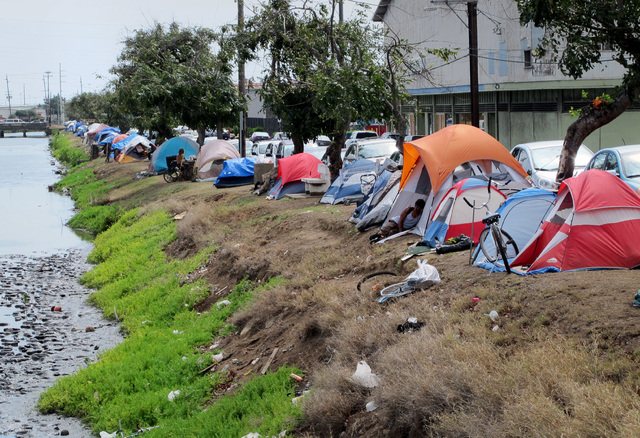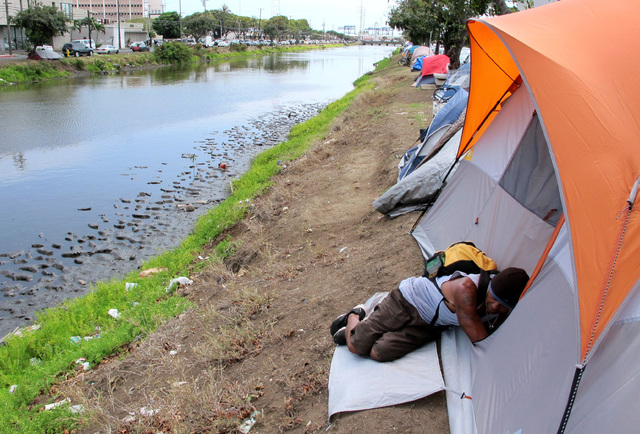HONOLULU — The Honolulu City Council wants sitting and lying down on sidewalks to be prohibited in more parts of town. ADVERTISING HONOLULU — The Honolulu City Council wants sitting and lying down on sidewalks to be prohibited in more
HONOLULU — The Honolulu City Council wants sitting and lying down on sidewalks to be prohibited in more parts of town.
The Council voted 7-2 on Wednesday to expand the city’s so-called “sit-lie” ban to encompass more areas where homeless people camp.
The city already bans sitting and lying down in Waikiki, Chinatown and other commercial areas.
Mayor Kirk Caldwell hasn’t decided if he’ll sign the proposal, said his spokesman, Jesse Broder Van Dyke. Some say the plan is too broad and will be challenged in court, he said.
The current ban covers sidewalks adjacent to businesses. The new bill adds sidewalks across the street from businesses, a promenade in Chinatown and the banks of a canal.
Some homeless people are feeling squeezed by the restrictions.
“They don’t want to give people chances,” said Derek Villanueva, a homeless man living on the streets in Honolulu. “What can we do? Wherever we go, they’re pushing us away.”
Villanueva spoke while visiting a friend at Kapalama Canal, which would be included in the sit-lie ban under the new legislation.
Like the city’s other sit-lie bans, the bill would prohibit sitting and lying in the designated areas between 5 a.m. and 11 p.m.
Jenny Lee, staff attorney for the Hawaii Appleseed Center for Law and Economic Justice, said the sit-lie bans have pushed homeless people from area to area and made it harder for them to access services.
“This is evolving into a cat and mouse game where we will just progressively expand the ban but never address the root of the problem through this kind of criminalization,” Lee said. “These sort of approaches are the least effective and most expensive way to address homelessness.”
Honolulu has a chronic housing shortage and some of the highest home rental and sales prices in the nation.
The city last year planned to create a camp at Sand Island, an industrial area home to a sewage plant and a former dump, where homeless people would be legally allowed to stay. But this idea stalled after critics said there were toxic chemicals in the area and questioned whether it would be safe to allow people to live there.
———
Associated Press writer Cathy Bussewitz contributed to this report.




